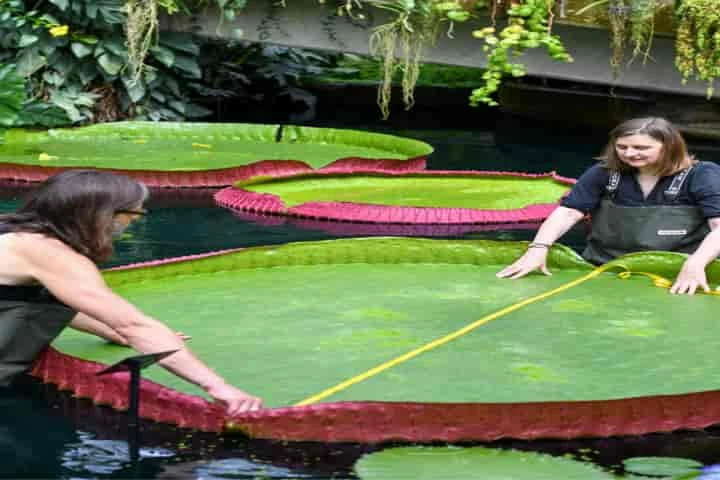While biologists are thrilled to have discovered a new species of giant waterlily which is the world’s largest, they are amazed that they didn’t recognise it sooner as it had been hiding in plain sight.
Known as Victoria boliviana, this species, as per a smithsonianmag.com report had been visible at London’s Kew Gardens for 177 years and also in Bolivia’s National Herbarium for 34 years, yet it was mistaken for another variety.
It was originally supposed to be Victoria amazonica, which is one of the two known types of giant water lilies that were christened after Queen Victoria in 1852.
It is only after collaborating with a group of scientists from Bolivia did it come to light that it was an altogether different variety.
Details of this find have been published in Frontiers in Plant Science.
Following this collaborative study, it is now established that V. boliviana is the world’s biggest water lily species. It can support 176 pounds and its leaves can grow to be 10 feet wide. This particular species’ abode is in ponds, freshwater rivers and floodplains of Bolivia’s northeastern region. It is capable of producing a variety of flowers in a year. The colours can change from white to pink and are covered with pointed thorns.
Explaining their big size, scientists suggest that it may be to enable them to contend for sunlight.
Kew Gardens received the seeds of V. boliviana in 2016 after it was donated by the horticulturalists of Bolivia’s Santa Cruz de La Sierra Botanic Garden and La Rinconada Gardens.
On germinating and growing, one of the study researchers, Carlos Magdalena, compared them with the other two known species of giant water lilies, and detected some differences. What allowed Magdalena to decipher the differences between the species was due to the fact that all the three grew side by side in one place at the Kew Gardens. It was found the distribution of the thorns in this species was different from that in other two while its seeds were also not similar.
Having observed the distinct differences and features of the three, Magdalena went to Bolivia to watch the V. boliviana grow in the wild.
Genetic analysis of V. boliviana also revealed that it was different from other giant lily species and is more closely related to V. cruziana. More study on this aspect brought to light that five million years ago, the common ancestor between V. cruziana and V. boliviana split from V. amazonica.
Common ancestor of V. boliviana and V. cruziana may have gone separately a million years ago.
V. boliviana is very vulnerable and runs the great risk of becoming extinct faster than the other two species since it grows in a limited area. Significantly, all the three species are threatened by continuous deforestation in the Amazon.




















